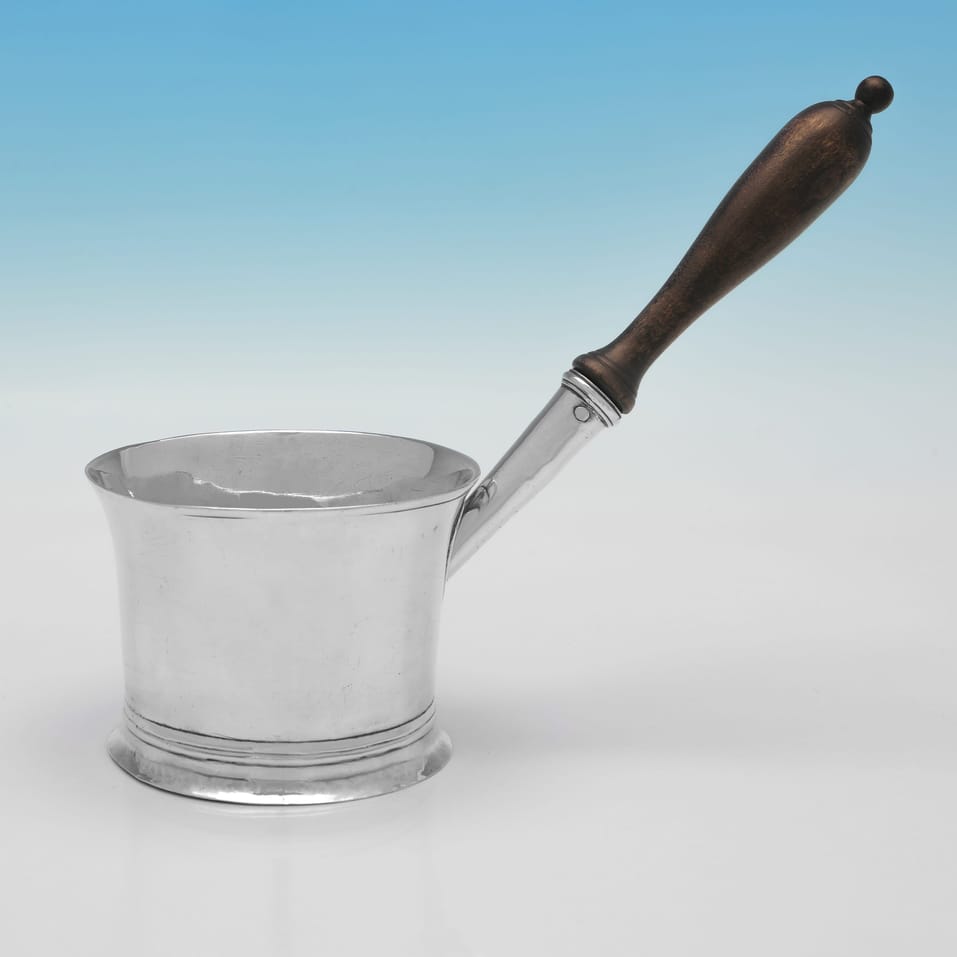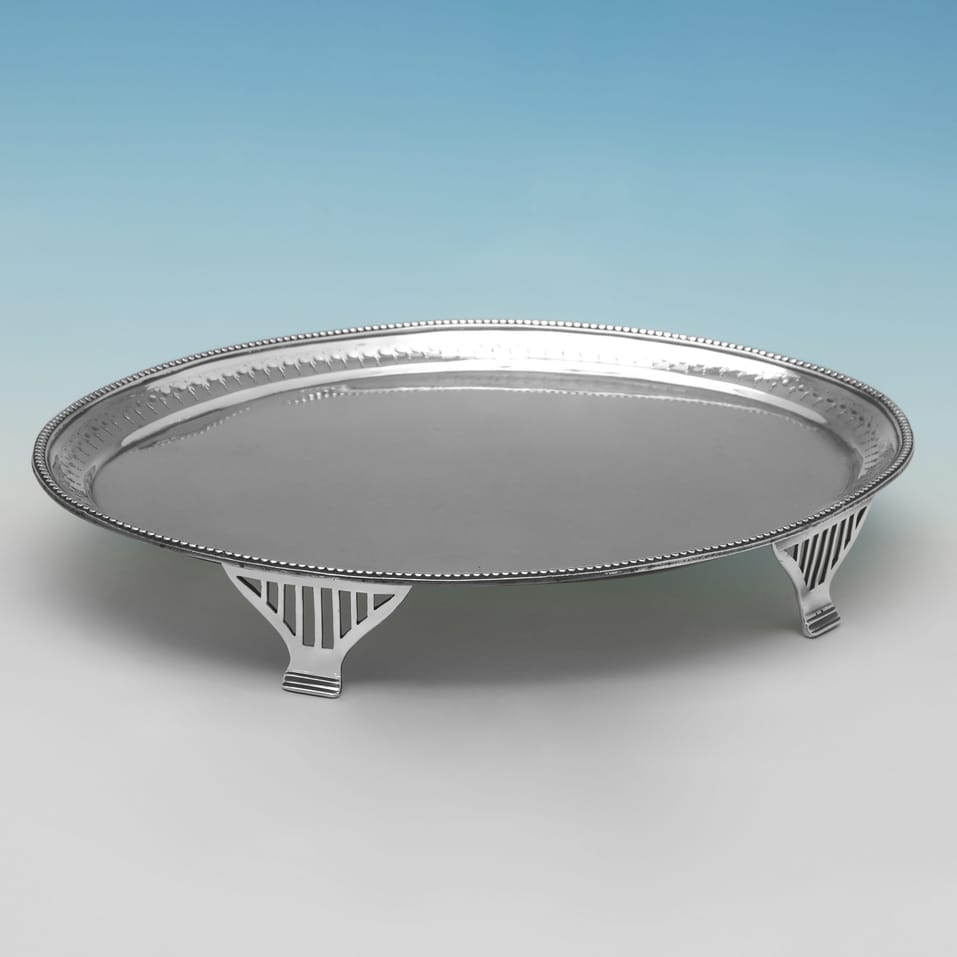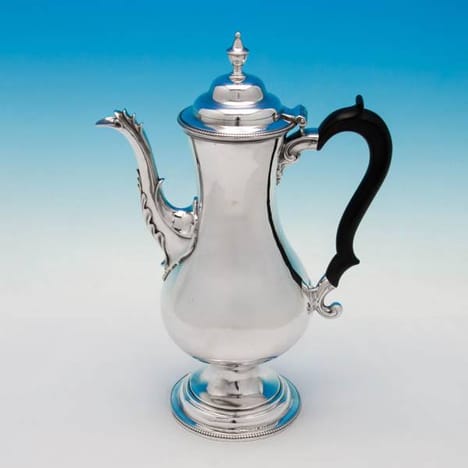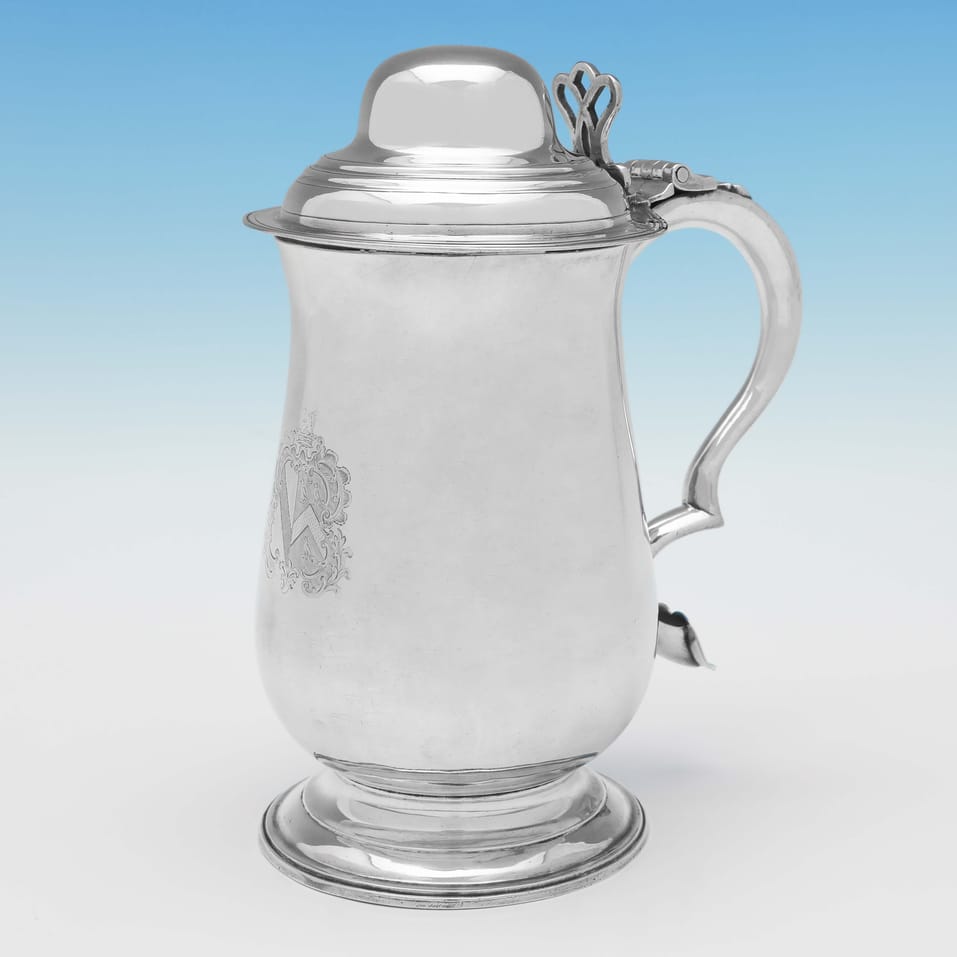HESTER BATEMAN
Perhaps more than any other, Hester Bateman is the silversmith who has managed to touch the hearts of successive generations of silver collectors. The considerable success she enjoyed in her lifetime can be attributed to keen business instincts, but her posthumous achievements are even greater and their reasons are more complicated, although, no doubt the most important of these is her unusual status as a superb lady silversmith in an industry dominated by men.
Hester Bateman is without doubt the most popular and renowned of all women silversmiths. Yet Hester's career as a silversmith was never intended. Widowed at the age of 51, she inherited her husband's small workshop practice and for the next thirty years, this unlikely shrewd business woman, grew the workshop into a thriving silver manufacturing firm.Hester Bateman was born in 1704 in Clerkenwell, London (England), and married John Bateman (a goldsmith) in about 1725. They had six children; John, Letticia, Ann, Peter, William, and Jonathan. The family lived at 107 Bunhill Row in the Parish of St. Luke in North London for more than a century. John and Hester purchased the houses on both sides of theirs, and two of the children occupied those homes in later years. Although his sons Peter & Jonathan were both doing their silversmithing apprenticeships, when John Bateman died in 1760, he bequeathed all his tools to Hester suggesting that she was already an accomplished silversmith. However, even with the skills of the trade, Hester had no small task ahead of her to continue the business. In these times, women-owned businesses were generally not accepted, and the industry was highly competitive. Unperturbed, Hester registered her mark of a scroll HB at Goldsmiths Hall in 1761 and aided by her son's Peter and Jonathan along with Jonathan's wife, Ann, the business boomed. In 1790, Hester finally retired at the grand old age of 81. Sadly, the following year her son Jonathan died, leaving Peter without his two long term partners. He turned immediately to his sister in law Ann, making her a partner in the business and registering their joint mark in 1791. From then Ann became the driving force in the business until her retirement in 1805. In 1800, Jonathan and Ann's son, William, became a partner in the family business, completing possibly the most famous of all silversmithing dynasties. Unlike most silversmiths who specialised in just one area of production, the Batemans were masters of many, producing fine wares right across the board. The main reason for their success was due to Hester's attention to design, detail and quality. All the pieces that left the workshop would be inspected to the highest standard and with this attitude the business grew. Many pieces of Hester Bateman's silver show identifying characteristics such as bead detailed edges and fine designs of bright-cut engraving. They received many commissions from The City Guilds, various religious establishments, and private individuals.
5 results
b4951 : Sterling Silver Brandy Saucepan
Hallmarked In 1785
Hallmarked in London in 1785 by Hester Bateman, this handsome, George III, Antique Sterling Silver Brandy Saucepan, is plain in style, featuring reed borders, and a wooden handle. The brandy saucepan measures 6.5"(16.5cm) tall, by 8.25"(21cm) from handle to side, and weighs 6.3 troy ounces.
£1,895
L4830 : Sterling Silver Teapot Stand
Hallmarked In 1787
Hallmarked in London in 1787 by Hester Bateman, this very handsome, George III period, Antique Sterling Silver Teapot Stand, features a bead and an engraved border, and pierved neoclassical feet. The teapot stand measures 1.25"(3cm) tall, by 7.75"(19.5cm) wide, by 5.5"(14cm) deep, and weighs 5.5 troy ounces.
£2,575
L5157 : Sterling Silver Saffron Pot
Hallmarked In 1782
Hallmarked in London in 1782 by Hester Bateman, this charming, George III period, Antique Sterling Silver Saffron Pot, stands on four feet, and features Neoclassical style engraved cartouches, bead borders, and a wooden handle and finial. The saffron pot measures 5.25"(13cm) tall, by 8"(20cm) wide, by 3"(7.5cm) deep, and weighs 8.1 troy ounces.
£3,295
b5981 : Sterling Silver Coffee Pot
Hallmarked In 1781
Hallmarked in London in 1781 by Hester Bateman, this wonderful, George III, Antique Sterling Silver Coffee Pot, features bead borders, a plain body, a wooden scroll handle, and acanthus detailing to the spout. The coffee pot measures 12"(30.5cm) tall, by 8"(20.5cm) from handle to spout and weighs 25 troy ounces.
£4,975
j6297 : Sterling Silver Tankard
Hallmarked In 1790
Hallmarked in London in 1790 by Hester Bateman, this handsome, George III, Antique Sterling Silver Tankard, is in traditional form, with reed borders, a dome top, and an engraved coast of arms opposite the handle. The tankard measures 8.5"(21.5cm) tall, by 6.5"(16.5cm) from handle to side, and weighs 22.5 troy ounces.
£6,975




